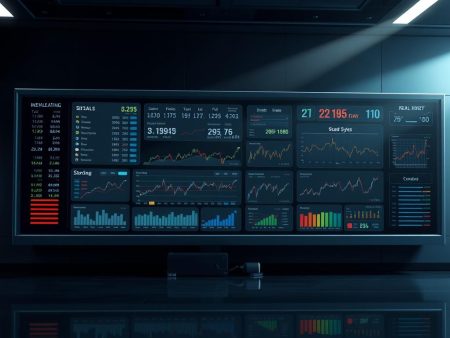Explore the future of blockchain through the lens of sustainability in this comprehensive guide to energy-efficient networks. Learn about eco-friendly consensus methods, top networks for 2024 like Ethereum 2.0, Algorand, and Tezos, and innovations set to revolutionize energy usage in the industry. Empower your digital investment decisions to support a green future.
Green Blockchain: Top Energy-Savers for 2024
As the world becomes increasingly digital, the demand for sustainable technology is on the rise. One area that’s caught the attention of many is the blockchain industry. But you may be wondering, which are the best energy-efficient blockchain networks to watch out for in 2024?
In a world where energy consumption is a pressing concern, it’s essential to explore blockchain networks that prioritize sustainability. These networks aren’t just about providing secure and transparent transactions, they’re about doing so in a way that respects our environment.
So, let’s dive into the world of energy-efficient blockchain networks. We’ll explore the top contenders for 2024, and why they’re leading the charge towards a greener future.
Understanding Blockchain Energy Efficiency
Delving deeper into the world of sustainable technology, it’s essential to shed light on what exactly makes a blockchain energy-efficient. This section aims to explore the inner workings of such systems and compare the energy dynamics of different consensus methods, specifically Proof of Work and Proof of Stake.
What Makes a Blockchain Energy-Efficient?
A blockchain, in its essence, becomes energy-efficient when it optimizes its energy usage during operations. Energy-efficiency not only entails consuming less power but also extends to the effective management of resources. It involves the algorithm design, transaction processes, and the consensus mechanism employed. For context, consider Bitcoin, a blockchain network whose energy consumption rivals several countries. Techniques including lower hash rates and staking, seen in other systems such as Ethereum 2.0, can create a much lighter environmental footprint.
Comparing Proof of Work Vs. Proof of Stake
The consensus mechanism is the heartbeat of any blockchain, dictating energy consumption. Opting for energy-efficient models often means avoiding Proof of Work (PoW), a method identified with Bitcoin.
Proof of Work involves miners solving complex mathematical problems to append transactions to the blockchain. The intense computational work requires powerful machines, consuming massive amounts of electricity. The costs and competitive nature of PoW make it challenging to maintain sustainability.
On the other hand, Proof of Stake (PoS) propels the ‘best energy-efficient blockchain networks 2024.’ It’s about holding and committing a certain number of tokens to validate transactions. PoS assumes that those with larger stakes are less likely to act dishonestly. Since it drastically reduces the need for computational power, it conserves energy, making PoS networks relatively eco-friendly.
In a world inching closer to sustainable solutions, understanding blockchain energy efficiency becomes critical, especially for those interested in investing in DeFi platforms safely. It’s not just about potentials for profit but also the impact on the environment. As we continue exploring these networks, their energy footprint could become a deciding factor for their adoption and their ability to reshape the digital world sustainably.
Top Energy-Efficient Blockchain Networks in 2024
Ethereum 2.0: A Transition to Proof of Stake
Launched in 2021, Ethereum 2.0 signifies a major shift from the energy-intensive Proof of Work to Proof of Stake, making it one of the best energy-efficient blockchain networks by 2024. By validating transactions based on token holdings rather than cryptographic mining, Ethereum 2.0 shows it’s committed to reining in its energy footprint, a feature contributing to its place at the top among DeFi platforms safely investing their funds. With this conversion, Ethereum 2.0 seem to be perfectly positioned to take the lead in reducing blockchain’s environmental impact.
Algorand: Low Energy Footprint and High Throughput
If you’re seeking high transaction speed with an energy-efficient design, Algorand fits the bill. It adopted Proof of Stake from inception and was designed to have a remarkably low energy footprint, making it one of best energy-efficient blockchain networks for 2024. Its energy-efficient architecture allows for high throughput and minimal transaction latency. Algorand’s commitment to energy efficiency without sacrificing performance illustrates a balance crucial in responding to the elevated global demand for climate-compatible technological solutions.
Tezos: On-Chain Governance and Energy Conservation
Tezos, another star in the realm of energy-efficient blockchain networks, pioneers a unique approach to on-chain governance. Its consensus algorithm, known as Liquid Proof of Stake, enables it to maintain not just energy efficiency but also a robust framework for on-chain governance. This method, along with its robust stake-holder inclusion protocol, provides Tezos with a governance model that effectively safeguards the sustainability and evolution of its ecosystem. Hence, Tezos offers a compelling proposition for adopting energy conserving strategies in a dynamically governed blockchain network by 2024.
Factors to Consider When Choosing a Blockchain Network
Drawing from the emphasis laid on energy efficiency in the preceding section, several factors come into play when you are considering which blockchain network to invest in or use. Two critical areas to focus on include scalability and network security. Both colour the impact a blockchain network has on environmental sustainability and they intertwine with the energy efficiency of these networks.
Scalability and Its Impact on Energy Efficiency
Scalability refers to a network’s capacity to handle an increase in user or transaction volume without diminishing performance. You might be considering investing in DeFi platforms backed by scalable blockchain networks. In doing so, you’re contributing towards mitigating the environmental impact of blockchain technology.
Scalable networks often result in faster transaction speeds and lower fees. However, it’s essential to recognize that increased scalability doesn’t always equate to energy efficiency. For instance, Bitcoin, owing to its Proof of Work consensus, offers limited scalability and is known for its high energy consumption. Contrastingly, Ethereum 2.0, transitioning to Proof of Stake, provides improved scalability and reduced energy footprint. This trend underscores the significant role “Best energy-efficient blockchain networks 2024” will play in reshaping the digital eco-space.
Network Security and Environmental Sustainability
Closely related to scalability is network security, a key concern for all blockchains, heavily influencing their energy consumption. Stronger security often requires more computational power which, in turn, demands more energy.
Proof of Work, the original consensus mechanism employed by Bitcoin and several other cryptocurrencies, disseminates a secure network but at the cost of high energy usage. Conversely, alternative consensus mechanisms like Proof of Stake or Delegated Proof of Stake provide robust security too, but with significantly less energy consumption.
As you begin to comprehend these factors, you’ll find your investments lean towards the more sustainable options in the vast crypto-landscape. Certainly, knowledge of “Best energy-efficient blockchain networks 2024” becomes an investment compass, guiding you through the ever-evolving world of DeFi platforms safely and sustainably.
Innovations in Blockchain That Increase Energy Efficiency
Revisiting the subject of energy-efficient blockchain networks in 2024, this section delves into innovative technology and strategies that add to the sustainability objectives. Pairing the demand for sustainable technology, these innovations offer a glimpse into the next-generation blockchain networks, merging sustainability with high-performance capabilities.
Green Protocols and Algorithms
Efficiency-fronted protocols and algorithms have made significant strides in blockchain technology. Notably, protocols like POS, DPOS, and BFT are rising in popularity and are preferred for their reduced energy consumption. For instance, Ethereum 2.0, transitioning to Proof of Stake, has shown markedly lower energy consumption than its predecessor, serving as a blueprint for potential “Best energy-efficient blockchain networks 2024.”
Furthermore, green algorithms such as Cuckoo Cycle and Equihash have surfaced as innovative solutions. These algorithms are designed to discourage competitive mining, therein reducing the demand for extensive computational power and the associated energy drains.
Renewable Energy Integration in Mining Operations
Bringing environmental consciousness to blockchain operations, integrations of renewable energy into mining operations have sprung up. These innovative methods are becoming prevalent in crypto mining practices and could significantly lower the impact of blockchain technology on our planet.
Solar-powered mining farms and geothermal mining centers exemplify this shift towards renewable energy. By harnessing sustainable power sources, these operations reduce blockchain’s carbon footprint and make strides toward the industry’s sustainability goals. In essence, these practices form potential green crypto mining alternatives for home miners, bringing sustainability within reach for all.
These energy-efficient practices ensure blockchain technology stands as a significant contributor to a sustainable digital future. Enterprises and individuals concerned with their environmental impact can consider these factors when deciding how to invest in DeFi platforms safely. This movement towards energy-efficient blockchain networks parallels the global effort towards promoting sustainability, likely to continue shaping the digital world well beyond 2024.
Conclusion
You’ve seen the future of blockchain through the lens of sustainability. Energy-efficient networks like Ethereum 2.0, Algorand, and Tezos are leading the charge, committed to reducing the environmental impact of blockchain technology. They’re embracing innovative green protocols, algorithms, and mining practices, all geared toward energy conservation.
By 2024, these advancements will be the norm, not the exception. They’re not just beneficial for the planet—they’re also advantageous for you as an investor. By aligning your investments with these sustainable practices, you’re supporting a greener digital future.
Remember, the blockchain industry’s dedication to sustainability isn’t a passing trend—it’s the future. And it’s a future that’s shaping up to be greener, more efficient, and more sustainable than ever before. So, as you navigate the digital world, keep these energy-efficient networks in mind. They’re not just good for your wallet—they’re good for the world.
What is the primary focus of the article?
The article primarily discusses the rising demand for sustainable technology in the blockchain industry, focusing on energy-efficient blockchain networks like Ethereum 2.0, Algorand, and Tezos, and looking ahead to advancements in 2024.
What are Proof of Work and Proof of Stake consensus methods?
Proof of Work and Proof of Stake are different consensus methods used in blockchain. Proof of Work is energy-intensive and involves solving complex mathematical problems, while Proof of Stake is a more energy-efficient method that uses the stake of users in the blockchain network.
What are the top energy-efficient blockchain networks mentioned in the article?
The article mentions Ethereum 2.0, Algorand, and Tezos as some of the top energy-efficient blockchain networks focusing on sustainability.
What technological innovations are expected in 2024?
Technological innovations for 2024 involve the emergence of energy-efficient protocols and algorithms, and integrating renewable energy solutions into blockchain mining operations, such as solar-powered mining farms and geothermal mining centers.
How do these advancements affect home miners and investors?
These advancements provide green alternatives for home miners, reducing their energy consumption. Investors in DeFi platforms are encouraged to consider these energy-efficient practices to support a sustainable digital future.


